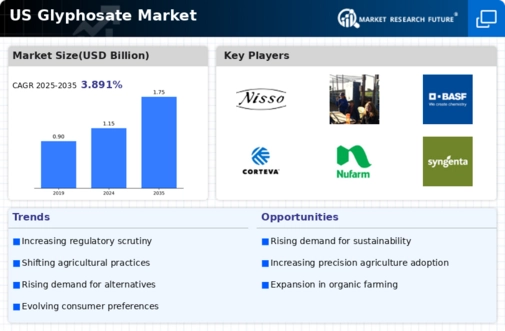The US Glyphosate Market has witnessed significant evolution over the years, reflecting a complex interplay of regulatory frameworks, public perception, and market dynamics. Glyphosate, a broad-spectrum systemic herbicide, is widely used in agricultural practices, leading to both opportunities and challenges for market players. The competitive landscape is characterized by a mix of established multinational corporations and emerging players, each vying for market share through innovation, strategic partnerships, and product differentiation.
The ongoing debates regarding the safety and environmental impact of glyphosate have also influenced market strategies, prompting companies to emphasize sustainable practices and alternative solutions.Nanjing Red Sun has carved a notable niche within the US Glyphosate Market, leveraging its extensive experience in manufacturing agrochemicals. The company's strengths lie in its focus on research and development, which enables it to produce high-quality herbicides that cater to the specific needs of American farmers. Nanjing Red Sun's product portfolio is designed to address various agricultural challenges, ensuring its competitive standing in the market.
Furthermore, the company has effectively built strong distribution networks within the United States, allowing for efficient market penetration and customer access. Its commitment to developing innovative formulations and adhering to safety regulations has also reinforced its reputation among stakeholders in the glyphosate segment.Nippon Soda has established a strong presence in the US Glyphosate Market by focusing on the development and production of agrochemicals that align with evolving agricultural practices and regulations. The company’s key products include advanced formulations of glyphosate, emphasizing effectiveness and safety in weed control.
Nippon Soda's strengths are further complemented by its robust research capabilities, which support continuous product improvement and adaptation to market demands. The firm has pursued strategic partnerships and collaborations to enhance its market footprint in the US, and its commitment to sustainable practices aligns well with current consumer expectations. Additionally, Nippon Soda's proactive approach toward potential mergers and acquisitions has positioned it to expand its product offerings and increase market share, reflecting its determination to compete effectively in the competitive glyphosate landscape.



















